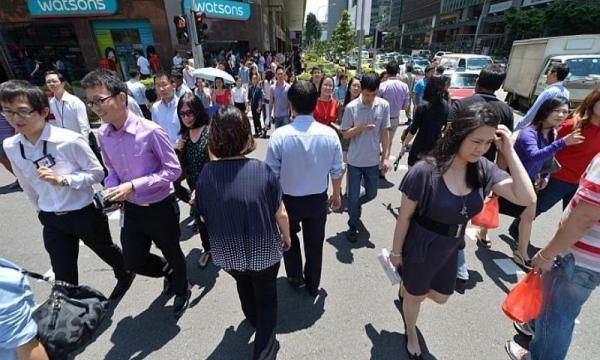
Singaporean services hit record-high in customer satisfaction in 2019
But customers stil bemoan the long waiting time in hospitals.
Companies have moved closer to bridging the satisfaction gap with Singaporean consumers, with the national customer satisfaction score rising to a thirteen-year high in 2019, according to the latest results of the Customer Satisfaction Index of Singapore (CSISG) conducted by Singapore Management University's Institute of Service Excellence (SMU ISE).
The national score rose to 74.3 points in 2019, a 1.2% improvement over the 73.5 points recorded the previous year.
Food & beverage (F&B) services drove the improvement in national satisfaction with a 3.6% YoY improvement, followed by info-communications with a 2.4% YoY increase and retail services with a 1.1% YoY rise. Finance & Insurance (+1% YoY), healthcare (+1% YoY), and tourism (+0.9%) sectors also recorded a rise in satisfaction scores.
"These positive changes in satisfaction were seen alongside observable improvements in local customers’ perceptions of quality and value in several of the measured industries,” said Neeta Lachmandas, ISE’s executive director.
The finance & insurance sector’s improvement came on the back of satisfaction level upticks in each of the five measured constituent sub-sectors: banks, credit cards, health & medical insurance, life insurance, and motor & other personal insurance.
With digital-only banking licenses due to be awarded, ISE researchers also studied the potential profile of new customers and asked respondents about their willingness to apply for the services of the upcoming neobanks.
Whilst the customer-base of the younger, middle-income group was expected, Lachmandas noted that 40% of respondents who are currently retail banking customers are keen to try out the new financial services offerings.
“On the other hand, the incumbent banks should take heed that this same segment of customers, who have significantly higher loyalty levels, are going to be more willing to give the new competition an opportunity,” she remarked.
In contrast, the study noted that less than one in eight said that they would consider buying insurance policies online.
Long waiting times
The healthcare sector's three constituents—polyclinics, private hospitals, and restructured hospitals-- also reported upticks in the satisfaction levels. However, the study noted that the issue of long wait times still plagues Singapore’s healthcare institutions, particularly in restructured hospitals and polyclinics. In all three measured sub-sectors, the satisfaction with the “waiting time” attribute rated last.
Impact analysis noted that “waiting time” and “waiting experience” attributes were key, if not the most important, drivers of patient satisfaction.
"Even as new hospitals and polyclinics are built and existing ones renovated, capacity at our healthcare institutions will continue to be stretched. Short of adding capacity at substantial cost, the CSSIG study shows appointment-making to be an effective solution in reducing perceived wait times,” said Chen Yongchang, ISE’s head of research and consulting.
























 Advertise
Advertise






